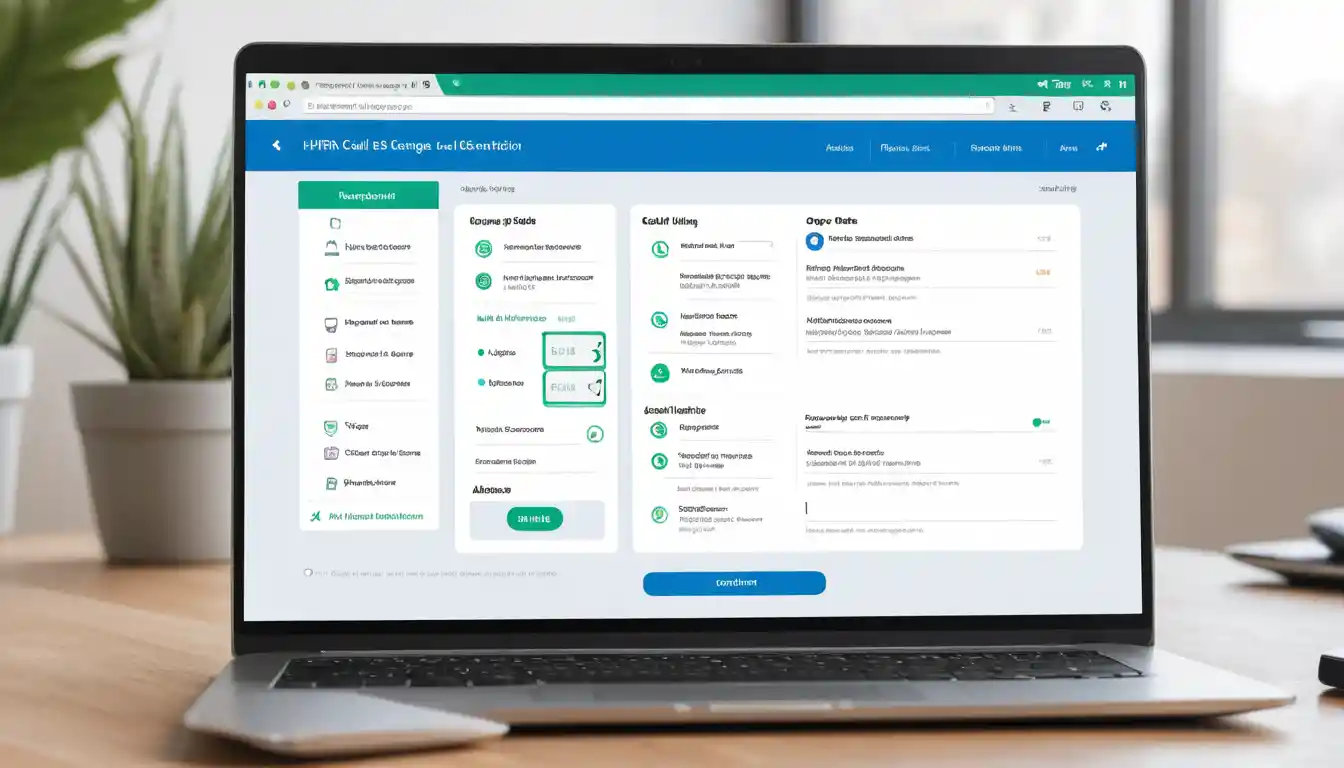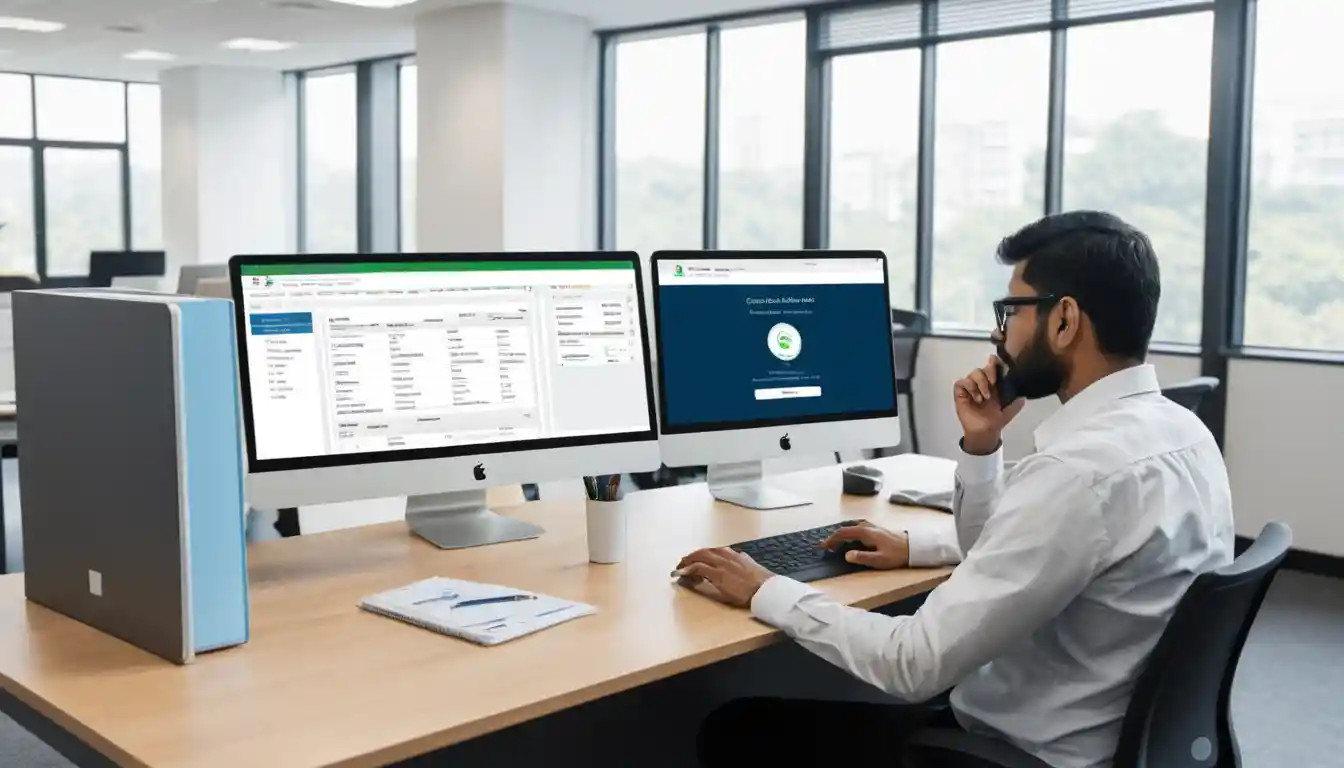In India, government employees rely on the Integrated Financial and Human Resource Management System (IFHRMS) to manage crucial aspects of their HR and financial data. One of the most important tools within IFHRMS is the Call Web ID settings. Understanding how to configure your IFHRMS Call Web ID Settings is essential for smooth access to the portal and making the most of its features.
This blog post will walk you through everything you need to know about IFHRMS Call Web ID settings, how to set it up, and why it is important for government employees in India.
What are IFHRMS Call Web ID Settings?
Before diving into the specifics, let’s take a moment to understand what IFHRMS Call Web ID settings are.
In simple terms, the IFHRMS Call Web ID is a unique identifier assigned to an employee when they access the IFHRMS portal. This ID is used for various activities such as logging in, making requests, updating personal data, and interacting with the system.
When configuring your IFHRMS Call Web ID settings, you will be provided with a personalized ID that links you to the system. The settings control how your web ID works, how you can use it to access different features, and what permissions are associated with your account.
Why is Configuring IFHRMS Call Web ID Settings Important?
The IFHRMS Call Web ID settings play a crucial role in streamlining communication between employees and the HR department. Here’s why it’s so important:
Easy Login: The web ID allows employees to log in to their IFHRMS account quickly and securely.
Access Control: It controls access to various modules such as salary details, leave balance, and other personal information.
Enhanced Security: Your IFHRMS Call Web ID settings ensure that only authorized individuals have access to sensitive data.
Customization: The settings help personalize your user experience by allowing you to customize your dashboard, reports, and preferences.
Key Features of IFHRMS Call Web ID Settings
The IFHRMS Call Web ID settings come with several features that enhance the system’s usability and security for employees in India. Here are the key features you should know about:
Personalized Web ID
When setting up your IFHRMS Call Web ID, you will be assigned a unique identifier. This web ID will be the key that grants you access to the system. It ensures that all your data is associated with your personal ID, making it easy for HR teams to track and update your information.
Customizable Dashboard
The IFHRMS Call Web ID settings allow you to customize your dashboard. This means you can choose what information you want to see first when you log in, such as salary details, leave balances, or financial reports. This feature is especially helpful for users who need quick access to specific information.
Permission Control
Your IFHRMS Call Web ID determines the permissions you have within the system. Depending on your role in your department, you might have access to view or edit specific types of data. For example, an employee may only have access to their own payroll and leave records, while a manager might have access to team reports.
Secure Login
The IFHRMS Call Web ID is associated with a secure login process, ensuring that only authorized personnel can access sensitive information. Multi-factor authentication (MFA) is often used in conjunction with the web ID settings to enhance security. This prevents unauthorized users from gaining access to personal and financial data.
Notification Settings
Through IFHRMS Call Web ID settings, employees can also set up notifications for important updates. For example, employees can receive alerts for salary credits, leave approvals, and policy updates. These notifications help keep employees informed and up-to-date.
How to Set Up IFHRMS Call Web ID Settings
Now that we understand the key features, let’s walk through the process of setting up your IFHRMS Call Web ID settings.

Step 1: Access the IFHRMS Portal
To begin, you’ll need to visit the IFHRMS portal for your region in India. If you’re unsure which portal to visit, you can check with your HR department or refer to your state or department’s official government website.
Once you are on the portal, look for the option to either log in or register if this is your first time setting up your account.
Step 2: Register or Log In
If you’re a new user, click the registration button and follow the prompts to enter your personal details. You will be asked to provide your name, employee ID, department, and other personal details. After completing the registration, you’ll receive your IFHRMS Call Web ID.
If you already have an account, simply enter your credentials (username and password) to log in.
Step 3: Configure Your Web ID Settings
Once logged in, go to your profile settings and look for the Call Web ID settings section. Here, you will be able to customize the following:
- Set your preferred username (if different from the default Web ID).
- Enable Multi-factor Authentication (MFA) for extra security.
- Choose notification preferences to get updates on your activities.
- Set privacy settings to control who can view your data.
Step 4: Update Your Personal Information
It’s always a good idea to update your personal information when you first log into the system. Ensure your contact information, employee ID, and other relevant details are accurate. This will help prevent any issues with your payroll, leave, and other requests.
Step 5: Save Your Settings
Once you’ve updated your IFHRMS Call Web ID settings, make sure to save the changes. You may be prompted to log out and log back in to ensure that your settings are applied correctly.
Step 6: Test the Settings
After configuring the settings, take a few minutes to test if everything is working. Try accessing different modules like your salary slip or leave details to ensure that your IFHRMS Call Web ID settings are functioning properly.
Common Issues with IFHRMS Call Web ID Settings and How to Fix Them
While setting up and using your IFHRMS Call Web ID settings is generally smooth, there are a few common issues that employees in India may encounter. Here are some solutions to help you troubleshoot:
Unable to Log In
If you’re unable to log in to your IFHRMS account, it could be due to incorrect credentials. Double-check your username and password. If you’ve forgotten your password, most portals provide a “forgot password” option to reset it.
If you are using Multi-factor Authentication (MFA), make sure you’ve received the correct verification code.
Incorrect Web ID Settings
If your IFHRMS Call Web ID settings are not working as expected, ensure that you have entered the correct information. You can reset your settings in the profile section. If you’re unsure, contact your HR department for assistance.
Access Issues
If you’re unable to access specific features of the portal, it might be due to permissions set by your department. If you think you should have access to certain features (like financial reports), contact your administrator to confirm your role and permissions.
Benefits of IFHRMS Call Web ID Settings
The IFHRMS Call Web ID settings offer a variety of benefits for employees and organizations alike. Here are some of the advantages:
Simplified Access
Having a unique web ID means employees no longer need to remember multiple usernames or passwords for different services. Everything is integrated into one login system.
Enhanced Data Security
By using the IFHRMS Call Web ID, sensitive employee data is protected with secure access controls and multi-factor authentication.
Better User Experience
Personalizing your dashboard and controlling your notifications makes the entire experience much more user-friendly. You’ll always be informed and can quickly access the information you need.
Improved Efficiency
With IFHRMS Call Web ID settings, the HR and payroll process becomes much more efficient for employees and administrators. There’s less manual work involved, and everything is automated, ensuring faster updates and fewer errors.





